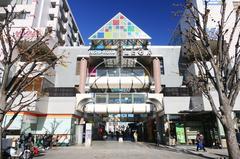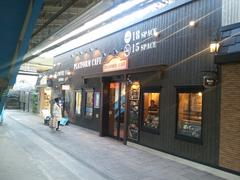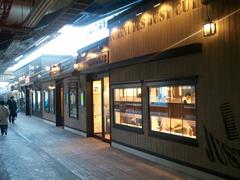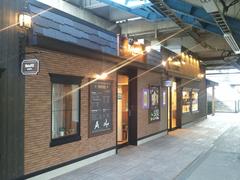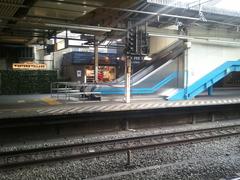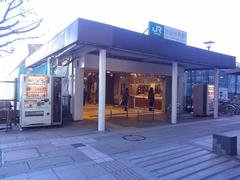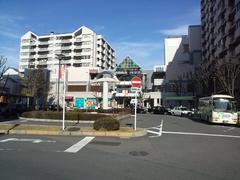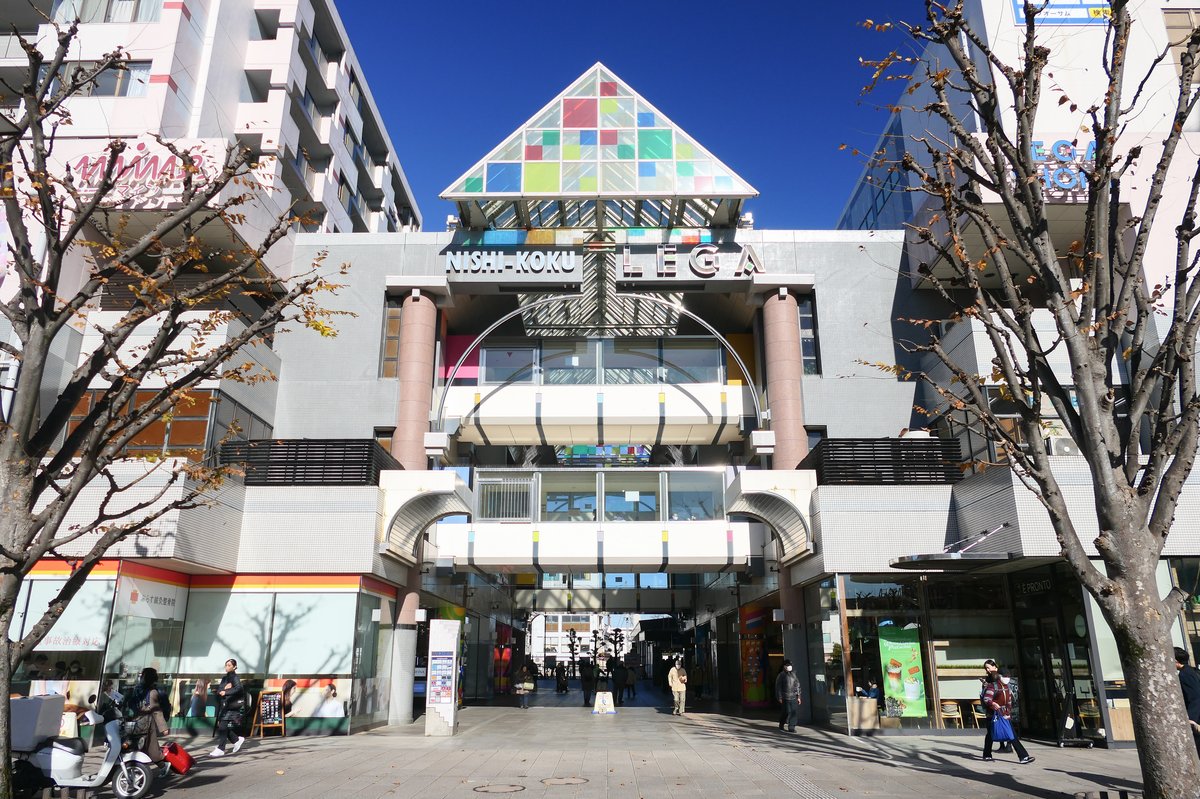
Nishi-Kokubunji Station Tokyo: Visiting Hours, Tickets, and Complete Travel Guide
Date: 14/06/2025
Introduction
Nishi-Kokubunji Station (西国分寺駅, Nishi-Kokubunji-eki) is a vital railway hub in Kokubunji, western Tokyo, that seamlessly connects travelers to the capital’s center and to the tranquil Tama area. An interchange between the east-west Chūō Line (Rapid) and the circumferential Musashino Line, the station not only provides convenient commuter access but also serves as a gateway to historical landmarks, lush parks, and community events in Kokubunji (Wikipedia: Musashino Line). Whether you are a daily traveler, a history enthusiast, or a first-time visitor, this comprehensive guide covers everything from station facilities and ticketing to cultural highlights and practical travel tips.
Table of Contents
- Introduction
- Historical Background and Rail Significance
- Practical Visitor Information
- Station Layout and Facilities
- Nearby Attractions and Cultural Sites
- Modern Innovations and Future Developments
- Visitor FAQs
- Summary and Final Tips
- Sources and Further Reading
Historical Background and Significance in Tokyo’s Rail Network
Origins and Growth
Nishi-Kokubunji Station opened on April 1, 1973, during a period of rapid suburban expansion in Tokyo (Wikipedia: Musashino Line). Initially conceived as part of a Tokyo “Outer Loop Line” in the 1920s, construction was delayed until after WWII, with the Musashino Line finally linking the Chūō Line (Rapid) and serving both freight and passenger needs. The Chūō Line (Rapid), electrified since 1904, provided a key east-west commuter corridor, and Nishi-Kokubunji was one of only two new stations added on the line following the start of rapid services (Wikiwand: Chūō Line (Rapid)).
Role in the Network
Strategically located, the station is a crucial interchange for those traversing Tokyo’s northern, southern, and western suburbs, offering an efficient alternative to traveling through the busy city center. It is an important stop for local and rapid services, although Special Rapid trains bypass it (Real Estate Japan: Nishi-Kokubunji Area Guide).
Practical Visitor Information
Visiting Hours & Station Access
- Operating Hours: The station operates from the first departure around 4:30–5:00 AM until the last train near midnight. Automatic ticket machines are available 24/7.
- Ticket Counters: Staffed “Midori no Madoguchi” counters are open during standard station hours for ticketing, seat reservations, and travel assistance.
Ticketing & IC Cards
- IC Cards: Suica and Pasmo are accepted for seamless entry/exit and can be purchased or recharged at the station or convenience stores (JR East Timetable).
- Single Tickets: Available from multilingual vending machines and ticket offices. Fares vary by destination (e.g., to Tokyo Station: ~390 yen).
- Tips: For multiple trips, a Suica card with a refundable deposit is recommended.
Accessibility & Travel Tips
- Barrier-Free Facilities: Elevators, escalators, tactile paving, and accessible restrooms support barrier-free movement.
- Multilingual Support: Bilingual (Japanese/English) signage and staff assistance are provided.
- Travel Tips:
- Avoid peak hours (7:00–9:00 AM, 5:00–7:30 PM) for a smoother experience.
- Use apps like Google Maps or Japan Travel Navitime for real-time schedules.
- Coin lockers are available for luggage storage, but secure them early during busy periods.
Station Layout and Facilities
Platform Configuration
- Chūō Line (Rapid): Two ground-level side platforms.
- Musashino Line: Two elevated side platforms perpendicular to the Chūō Line, plus a central freight track.
- Transfers: Vertical movement via elevators, escalators, and stairs enables easy transfer between lines.
Ticket Gates, Exits, and Amenities
- Ticket Gates: Central concourse with automatic gates (accepting IC cards) and a staffed ticket office.
- Exits: North and south exits connect to different districts; clear signage aids navigation.
- Amenities:
- Accessible restrooms, coin-operated lockers, waiting areas.
- Vending machines and small shops.
- Free JR East Wi-Fi throughout the station.
- Uniformed staff for assistance and lost & found.
Transportation Access
- Rail: Direct Chūō Line (Rapid) and Musashino Line services to central Tokyo, Saitama, and Chiba.
- Bus & Taxi: Bus stops outside both exits; taxi stands at the main exit.
- Bicycle: Secure parking available; bike rentals nearby.
- Parking: Limited car parking—public transport is recommended.
Nearby Attractions and Cultural Highlights
Historical and Cultural Sites
- Musashi Kokubun-ji Temple: Founded in the 8th century, featuring a historic gate and ancient copper Buddha statue (Japan Travel). Open daily 8:00 AM–5:00 PM, free entry.
- Kokubunji Temple Ruins: Explore the remains of a Nara period provincial temple—open year-round, free.
- Yakushido Temple: Dating to the 12th century, noted for moss gardens and bell tower. Open daily 7:00 AM–6:00 PM, free.
- Honda Hachiman Shrine: Features vibrant colors and historic artifacts; hosts a festival every September.
- Tokura Shrine: 18th-century origins, known for festivals and carved guardian statues.
Parks and Natural Features
- Tonogayato Garden: Traditional landscape garden (9:00 AM–5:00 PM, closed Mondays, 300 yen admission); especially beautiful in autumn.
- Kokubunji Cliff Line: Scenic natural terrace, popular during cherry blossom season, open year-round and free.
- Otaka-no-michi Path: Peaceful walk along springs and bamboo groves, accessible year-round.
Museums & Archives
- Tokyo Metropolitan Archives: Eight-minute walk from the station; features exhibits and rare documents (Tokyo Metropolitan Archives). Open Tues–Sun, 10:00 AM–5:00 PM, free entry.
Community and Shopping
- Tama Library: Modern public library with community events.
- Local Shopping Streets: Cafés, bakeries, izakaya, and ramen shops offer authentic local flavors.
Modern Innovations and Future Developments
- JR East “Station Work” Booths: Private office spaces for remote work on platforms, reservable in 15-minute increments (Japan Insider: Office Space on a Train Platform).
- Upcoming Rail Enhancements: Green (first-class) cars and platform extensions on Chūō Line by 2025; through-services linking Seibu Ikebukuro, Musashino, and Keiyō Lines planned by 2028 (Wikiwand: Chūō Line (Rapid)).
Visitor FAQs
Q: What are the station codes for Nishi-Kokubunji?
A: JC17 (Chūō Line), JM33 (Musashino Line).
Q: Are there ticket offices and multilingual machines?
A: Yes, “Midori no Madoguchi” and multilingual ticket machines are available.
Q: Is the station accessible?
A: Yes, with elevators, tactile paving, and accessible restrooms.
Q: Where can I buy tickets for attractions?
A: Purchase train tickets at the station; attraction tickets (e.g., for Tonogayato Garden) are sold on-site.
Q: What’s the best way to reach Kokubunji Temple Ruins?
A: About a 10-minute walk from Nishi-Kokubunji Station.
Q: Are guided tours available?
A: Occasionally at Musashi Kokubunji Temple and the Archives; check official sites.
Summary and Final Tips
Nishi-Kokubunji Station stands at the intersection of modern transit convenience and a wealth of cultural attractions. The station’s accessible design, frequent connections, and innovative amenities make it ideal for both daily commuters and visitors seeking Tokyo’s quieter, historic neighborhoods. From ancient temples and serene gardens to lively festivals and modern workspace solutions, there are experiences for every traveler.
Top Tips:
- Use IC cards for smooth travel.
- Visit outside rush hours for comfort.
- Consult station area maps and staff for guidance.
- Download the Audiala app for maps, guides, and real-time updates.
For a rewarding exploration of western Tokyo’s history, nature, and community, Nishi-Kokubunji Station is your perfect starting point.
Sources and Further Reading
- Wikipedia: Musashino Line
- Real Estate Japan: Nishi-Kokubunji Area Guide
- Japan Travel: Kokubunji City Temples & Shrines
- Wikiwand: Chūō Line (Rapid)
- Japan Insider: Office Space on a Train Platform
- JR East Timetable
- Japan Travel Navitime
- Tokyo Metropolitan Archives
